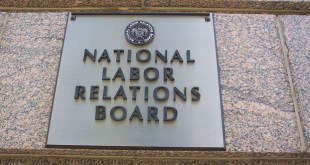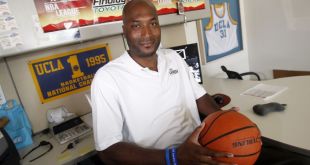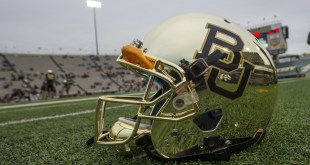On Tuesday the United States District Court for the Southern Division of Indiana ruled on Berger vs. NCAA, in what was a very interesting, if unheralded decision. This particular case involved the questions of whether or not student-athletes (“SAs”) are employees under the Fair Labor Standards Act (“FLSA”) and if so, whether or not the NCAA and its membership institutions were violating the FLSA by failing to pay the student athletes minimum wage. Before even getting to the question at hand however, this case had a fairly intriguing background and some interesting rigmarole.
Background
The lawsuit was initially filed by Houston University women’s soccer player Samantha Sackos against the NCAA and every single NCAA member institution.[i] The claims were the same, that the NCAA and its institutions were violating the wage and hour provisions of the FLSA (specifically its minimum wage provisions). Sackos also sought to certify a class of all current and former SAs. Almost immediately, however, the plaintiffs ran into problems. To begin, the plaintiffs voluntarily dismissed every public NCAA institution from the case. The district court surmised that this was because the plaintiffs realized that their claims against those institutions would likely fail because those institutions would be immune from prosecution of these claims under the 11th Amendment to the Constitution. Also, the original plaintiff was dismissed from the case and replaced with three female track and field SAs at the University of Pennsylvania (“Penn”).[ii] Finally, the NCAA and every private institution other than Penn were dismissed from the case. The plaintiffs’ initial argument was that since NCAA rules apply to all of its institutions, all institutions and the NCAA were liable. Only later, and in response to defendants’ replies, did the plaintiffs attempt to argue a “joint employer” theory of liability.[iii] However, the court dismissed the joint employer argument because it was not initially plead in the amended complaint and it would contradict the facts alleged in the amended complaint which stated that the remaining plaintiffs were employees only of Penn. Thus after all of this, what was left was three Penn track and field SAs suing Penn for violations of the wage and hour provisions of the FLSA.
The Court’s Decision
The crux of the plaintiffs’ argument according to the court essentially boiled down to a “fairness” argument, claiming SAs are no less deserving of employee status and pay than other work study participants. In this context Penn is an interesting defendant in this case. Penn (as with other Ivy League institutions) does not offer any athletic scholarships. Thus, if the plaintiffs were found to be employees, it would have been likely that Penn would have violated the FLSA since the SAs at Penn receive no remuneration related to their athletic endeavors. On the other hand, as discussed below, the fact that Penn does not offer athletics scholarships played a large role in the court ruling against the plaintiffs in this case. The district court, despite plaintiffs arguments, quickly and properly reframed the issue “the questions is not whether the Plaintiffs, as student athletes, are ‘deserving’ of employee status, but rather whether Congress intended for the FLSA to apply to them.” The district court also went out of its way to make sure this opinion was read as a limited one,
“This ruling should not be read as expressing any opinion regarding the broader question about whether, as a matter of philosophical principle or general fairness, college athletes in general, or particular groups of college athletes whose teams generate substantial revenue, should be compensated in some way. This case is not the proper forum for resolving that societal debate.”[iv]
Bizarrely, the plaintiffs’ main argument as to why the SAs should be employees was based off of a U.S. Department of Labor (“DOL”) fact sheet designed to aid with determining employment status of interns which was based off of a test laid out in Walling v. Portland Terminal Co – a 1947 case regarding railroad brakemen trainees. Besides the fact that the case at hand had almost no resemblance to the situation in Walling, the court also noted that the case at hand did not deal with interns either. Also, the Seventh Circuit, as well as many others, rejected the rigid standard for determining employee status outlined in Walling and similar decisions in favor of a more flexible “economic realities” test.[v] . Here, the court noted (citing back to the zombie Board of Regents antitrust case),
“the factors used in the trainee and private-sector intern context fail to capture the nature of the relationship between the Plaintiffs, as student-athletes, and Penn. The Supreme Court has recognized that there exists in this country a ‘revered tradition of amateurism in college sports’ . . . a fact that cannot reasonably be disputed. That tradition is an essential part of the ‘economic reality’ of the relationship between the Plaintiffs and Penn.”[vi]
Building off of this sentiment the court noted that “generations of Penn students have vied for the opportunity to be part of that revered tradition with no thought of any compensation.” While this doesn’t sound like analysis of any economic realities, the court is pointing out that the understanding of the parties at the initiation of the relationship, while not dispositive, matters in this analysis. Since Penn does not even offer athletic scholarships, it would be hard for a SA at Penn to argue that when deciding to attend Penn, the SA believed they were entering a relationship involving compensation, let alone a relationship constituting employment.
The court next considered the Congressional intent of the FLSA and noted that there is no secret that thousands of unpaid SAs compete in college sports every year and the fact that the United States Department of Labor has taken no action is indicative of a governmental intent that the FLSA does not apply to SAs. The court cited to language in a 7th Circuit decision to support this argument:
“The system of compensation used by Sterling is industry-wide, and of long standing . . . It is possible for an entire industry to be in violation of the Fair Labor Standards Act for a long time without the Labor Department noticing. But a more plausible hypothesis is that the auto repair industry has been left alone because the character of its compensation system has been recognized for what it is – a bona fide commission system.”[vii]
The court further supported its congressional intent findings by citing a Department of Labor Field Manual:
“As part of their overall educational program, public or private schools and institutions of higher learning may permit or require students to engage in activities in connection with . . . interscholastic athletics and other similar endeavors. Activities of students in such programs, conducted primarily for the benefit of the participants as part of the educational opportunities provided to the students by the school or institution, are not ‘work’ [under the FLSA] and do not result in an employee-employer relationship between the student and the school or institution. Also the fact that a student may receive minimal payment for participation in such activities would not necessarily create an employment relationship.”[viii]
While noting the DOL Handbook is not dispositive, the court ruled that given the economic realities of the situation (especially the intent of the parties at the time of the initiation of the relationship) and the DOL’s position on the issue at hand, the plaintiffs were not employees of Penn for purposes of the FLSA.
Analysis
This decision is an interesting one. To begin, in my opinion the plaintiffs’ attorneys did a horrendous job throughout the case. The failure to initially plead a theory of joint employment, was in my estimation, an egregious error. A plaintiff suing under the FLSA only has standing to sue his or her employer, and so for an ambitious case like the one at hand, where the plaintiff is trying to rope in hundreds of defendants, I don’t know how the joint employment argument was initially missed. Secondly, the plaintiffs’ relying on the DOL fact sheet regarding interns is equally odd. I’ve never heard anyone argue that SAs are interns. The test in the fact sheet is based off of a case which the Seventh Circuit and others, have summarily rejected. The plaintiffs should have argued the economic realities supported an employment relationship based off of the amount of time the SAs spend on sports and the degree to which Penn via the coaches and compliance staff controlled the SA’s day to day life. Finally, the decision to file suit in the NCAA’s backyard in the Southern District of Indiana is odd, although was likely the result of early attempts to obtain personal jurisdiction over the NCAA.
All of that being said, it seems unlikely that even a well plead and well argued case would have made a difference here. The district court opinion is curious, because it does not go through much, if any, real analysis.[ix] First, the court regurgitates the same Board of Regents language the NCAA has been trying to rely on for years with limited success, in order to show that the economic realities support a finding of non-employment. Especially spurious here, is that this is an FLSA case, not an antitrust case, so Board of Regents shouldn’t be applicable at all (and that’s before considering how the economic realities of collegiate sports have transformed in the time since Board of Regents; although to be fair athletics at Penn likely more closely resemble collegiate athletics in the 1980s than the vast majority of Division 1 schools today). Next the court looks only at a single economic reality (the understanding of the parties at the initiation of the relationship) and some DOL secondary sources to rule as a matter of law. While ultimately, I believe the outcome to be correct (especially given the fact that the Plaintiffs attend Penn which does not offer athletics scholarships), the analysis in the decision seems limited, and appears that the court prejudged the case to some extent. Citing an antitrust case from the 1980s and a DOL field operations manual to support a ruling as a matter of law, might be some of the weakest support I have read or heard of in a decision, especially on a topic with plenty of case law to rely on.
Unfortunately for the plaintiffs, after all the initial procedural hurdles, the plaintiffs and defendants that remained were probably one of the worst possible combinations for this claim to have a chance at success. Whether or not a similar claim could succeed at a different private school (Stanford, Notre Dame, etc.) remains to be seen, as that particular case would be at least substantially different factually where SAs are on athletic scholarships. This is now the second tribunal to rule that SAs are not employees in a given context after the DC Circuit of the NLRB reversed a ruling that SAs were employees under the National Labor Relations Act last August.
[i] http://www.usatoday.com/story/sports/college/2016/02/16/ncaa-wage-hours-lawsuit-samantha-sackos-penn-track-fair-labor-standards-act/80482630/
[ii] http://www.usatoday.com/story/sports/college/2016/02/16/ncaa-wage-hours-lawsuit-samantha-sackos-penn-track-fair-labor-standards-act/80482630/. In full disclosure the author of this article is an alumni of Penn.
[iii] I wrote on the NCAAs potential joint employer liability back in 2014.
[iv] Judge Wilken in the O’Bannon decision expressed a similar sentiment that the antitrust laws were not the ideal tool to instigate change in collegiate athletics.
[v] See, Vanskike, 974 F.2d at 809
[vi]. And you all thought Board of Regents was dead after the O’Bannon appellate decision. It just keeps coming back.
[vii] Yi v. Sterling Collision Ctrs., Inc., 480 F.3d 505, 510-11 (7th Cir. 2007)
[viii] U.S. Department of Labor, Wage and Hour Division, Field Operations Handbook §10b03(e) (Oct. 20, 1993).
[ix] Although since this is a ruling on a motion for summary judgement based on a 12(b)(6) motion, the court is ruling as a matter of law, and thus factual discussion would naturally be limited to what is in the complaint.
 The Sports Esquires Putting Sports on Trial
The Sports Esquires Putting Sports on Trial




One comment
Pingback: Sports Law Links - The Sports Esquires